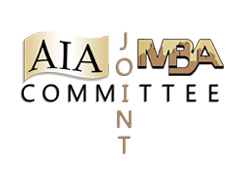

Procurements & Supplements
Section I-3
Best Value Contracting for Public Construction
When Best Value Contracting (BVC) is selected to award a construction contract, the Joint Committee recommends a transparent competition among responsible contractors to choose the constructor that offers the best combination of performance qualifications and price. The integrity of the construction industry and the future use of BVC is dependent upon qualified firms having an equal opportunity to fairly compete for a public construction project.
When to use Best Value Contracting
While there are many factors to consider to select the use of BVC for a project, a few criteria that may guide your decision include, but are not limited to, the following items: a project of unusual complexity, requiring expertise not commonly available among contractors; a time-sensitive completion and/or aggressive schedule; a project involving the use of a specialized construction technique that is not generally known throughout the industry; a project that involves complex and potentially unforeseen environmental issues; a design-build project (Section I-7); or if the entire scope of project is unknown at time of bidding and there is a high probability of major design changes during construction. There are certainly additional factors that could be considered; however, addressing these items may get your decision to use BVC closer. Additionally, the Joint Committee recommends consulting a practiced professional or public agency with a successful track record of using BVC to ensure this procurement method is advantageous and legally permitted.
The Selection Criteria in BVC
There are several industry accepted concepts that a BVC owner may use in order to select the firm which provides the best value to a project. The two concepts briefly discussed in this recommendation are the one-step and two-step selection process. The steps are defined by the number of formal submittals. In a two-step selection process, the technical criteria (and other non-price items requested by the owner) are submitted first, allowing the evaluation committee to assess which firms can perform the best value on a project (possible criteria listed below). After reviewing the technical submission, the evaluation committee may create a short-list of bidders acceptable to the owner based on a scoring system established, then competitively bid to the short-list firms in the second step of this process. The evaluation committee may make a final decision based solely on the competitive price; or depending on the submitted documents, an interview to discuss scope review, value engineering, constructability issues, sustainability ideas, etc., a decision may be determined that a firm can provide the best value for a successful delivery of a project.
In a one-step selection process, the owner requests a combination of the technical and price submittals to be simultaneously submitted so that both factors are evaluated, in accordance with a weighting of criteria items that is fully-disclosed in the request for proposals.
In either the one- or two-step process, it is recommended that the owner develop a list of non-price criteria, ranking each item in accordance with their importance to the specific project. These criteria requirements should be spelled out to clearly state what the evaluation committee is looking for. The following are examples of possible non-price/ technical criteria:
- Experience with project team
- Safety performance
- Bonding program (single project / aggregate)
- Past performance
- Schedule commitment and ideas to project
- Firm's experience relating to project (delivery method, agency, funding source, etc.)
- Depth of resources
- Responsiveness of submittal
- Default history, if any
- Project approach
BVC Evaluations
It is recommended that the owner assemble an evaluation committee to select the contractor that offers the best value to a specific project in a fair and transparent manner. In an effort to lower the probability of a protested bid, the owner should incorporate a committee comprised of various viewpoints, expertise, and background. A chairperson, preferably with BVC experience, should run the committee. Prior to reviewing any submissions, the evaluation committee should be educated on the project, the owner's requirements and the established selection criteria with weight of items.
When reviewing submittals, the committee should focus on content and how it addresses the criteria. When evaluating references, the committee should take a consistent approach, asking the same questions about each proposal, to effectively and accurately compare proposals. During deliberations, the committee should work towards a consensus, agreeing on a single score for each bidder and selecting the responsible contractor whose proposal is determined to represent the best value for the owner on its project. The committee should take all responsible steps to avoid any appearance of impropriety in the proposal review process, and it should afford the contractors who are not selected an opportunity for a debriefing to learn the reasons why its proposals was not selected.
Legal disclaimer: due to the legal environment associated with BVC, the Joint Committee recommends legal counsel be sought to assure actions conducted associated with bidding a BVC project are in accordance with the law.
Glossary Terms for the Best Practices Guide
History of Recommendation:
Approved July, 2011
Back to Procurements & Supplements
About Us | Best Practices Guides | Glossary | Hot Topics | Contact | Home
© 2023 AIA MBA Joint Committee